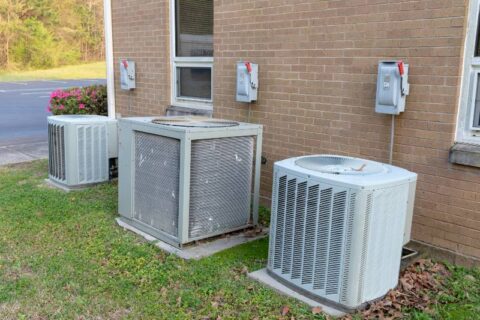Air Handler Basics
Many types of heating and cooling systems are available to keep your Utah home comfortable. One particularly confusing piece of equipment is the air handler, which your home may or may not use, depending on what type of HVAC system you have. Learn the air handler basics here to determine whether you need air handler services.
Does My HVAC System Have an Air Handler?
Most Utah homes are heated and cooled with a furnace and air conditioner. The air conditioner uses the furnace’s built-in blower to deliver cooled air throughout the house, so it doesn’t need a dedicated air handler.
However, heat pumps work a little differently. These systems are essentially air conditioners that can operate in reverse to provide year-round heating and cooling. A dedicated air handler is required because the system has no furnace blower for the heat pump to use.
The biggest takeaway is that conventional furnaces and air conditioners don’t have an air handler—just a blower. You only need to worry about installing and maintaining an air handler if you have a heat pump.
Parts of an Air Handler
The air handler looks similar to a furnace and is installed where the furnace would normally go. But the system is all-electric, with no gas burners in sight. This means, unlike combustion furnaces, air handlers don’t require a flue to exhaust gases outside. Here are the parts of an air handler that work together to deliver heated and cooled air:
- The evaporator coil is a critical component in the refrigeration cycle. In cooling mode, the refrigerant inside the coil removes heat from the indoor air blowing over it. In heating mode, the refrigerant transfers heat from outdoor air to the indoor air blowing over the evaporator coil.
- The blower motor is a fan that moves conditioned air from the air handler to the connected ductwork. The blower also draws return air back into the air handler for reheating or cooling. Blower motors come in three main types. A single-speed blower operates at one fixed speed, a multi-speed blower runs on high or low, and a variable-speed blower functions on a sliding scale between off and full blast.
- Ductwork connections link the air handler to a network of air ducts installed throughout the house.
- The air filter removes large, airborne particles that could settle on and potentially damage air handler components. Installing a more efficient filter can also reduce dust buildup in the ductwork and improve indoor air quality.
- An optional electric heat strip serves as a backup heat source when the outdoor air becomes too cold for the refrigerant to absorb heat effectively. This heating element acts like a toaster, warming the air that blows past it before circulating back into your home.
If you have a heat pump, servicing the air handler is an important part of routine maintenance. First, remember to change the filter every one to three months or as often as the manufacturer recommends. Then, schedule routine maintenance with Parley’s PPM Plumbing, Heating & Cooling to keep the equipment running smoothly. Our customers have relied on us for quality HVAC products and unbeatable customer service since 1979.
To schedule air handler services, please call 801-226-3033 if you live in Utah County, or reach us at 801-229-2665 if you’re a Salt Lake County resident. You can also contact us online with any questions you have.


